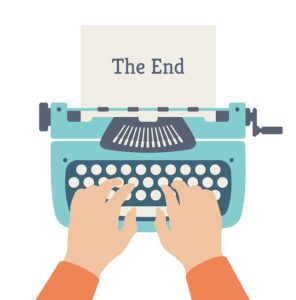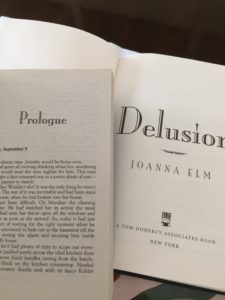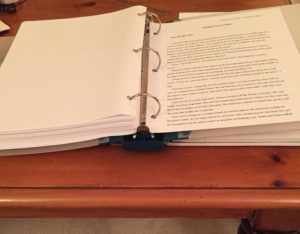 You may recall a couple of weeks ago I wrote that I had finished writing my book. I typed “The End” at the bottom of my last chapter and emailed the manuscript to a few trusted beta readers — and to a professional editor.
You may recall a couple of weeks ago I wrote that I had finished writing my book. I typed “The End” at the bottom of my last chapter and emailed the manuscript to a few trusted beta readers — and to a professional editor.
It felt good to say that I had met my deadline (so as to be able to enjoy a week’s vacation with my British bestie.) But, as any published, or even aspiring, author knows only too well, the real hard work is just about to begin.
Nuggets of Hope
My new editor, (Helga Schier of withpenandpaper.com, a true “find” recommended by a writer friend) made that clear enough in her 17-page evaluation stating, ” Every writer, no matter how experienced, goes through a process of writing and rewriting and rewriting and rewriting and…a process that potentially never stops.”
Lest the hearts of my family and friends are sinking in despair at the thought that my writing of Book 3 is never going to end, let me offer some nuggets of hope. The following is one of the several uplifting comments that my new editor included in her evaluation of my 90,000-word thriller:
“Your unassuming prose takes us through a mostly fast-paced plot with many truly surprising, but mostly well-prepared plot twists. Yes, this is a page-turner with depth.”
Love of Plotting
 Let me say here — without even the slightest attempt at modesty — the above assessment did not come as a total surprise. I have always loved the plotting process of a novel as reviewers of my two previous novels seem to have appreciated.
Let me say here — without even the slightest attempt at modesty — the above assessment did not come as a total surprise. I have always loved the plotting process of a novel as reviewers of my two previous novels seem to have appreciated.
In its review of Scandal, my first novel, Publisher’s Weekly, the “bible” of the publishing industry, said: “Elm has a vivid writing style and solid narrative ability.” Of my second novel, Delusion, PW said: “Despite some earnest attempts at characterization, the plot’s the thing here as Elm hurls one curveball after another at both [the protagonist] and her readers.”
This time, however, I think I may have also nailed the characters (“none of them flat or cliched, all of them relatable, while not necessarily likable” commented my editor, adding, “it is shockingly easy to follow both [the female protagonist’s and the antagonist’s] justifications … so much so that readers may well find themselves rooting for [the antagonist])
This probably pleases me more than anything else in my editor’s evaluation because as I wrote here, last year, I’ve taken the greatest pains with my attempts to create a memorable antagonist, not just a cardboard cutout of a villain.
But…But…But
 Of course, I would be delusional if I simply focussed on these positive remarks.
Of course, I would be delusional if I simply focussed on these positive remarks.
I typed “The End” on a manuscript that, after many revisions, rewrites and edits, I considered to be sufficiently “readable” for a professional editor to evaluate for story, writing, plot, pacing, and characters.
My “readable” draft, nevertheless, contained some problems I was aware of before “rushing” the manuscript out of the house. For example, there’s a less- than -compelling plot point which I knew should never make it into a final draft, but which I used as a temporary, lazy prop.
It also contained some problems I wasn’t always aware of like paragraphs where I failed to clearly convey onto the page what was so clearly in my head.
So, there were 16 more pages of the editor’s evaluation which together with questions and comments on many pages of the manuscript tells me there is more work to be done, and more drafts to be written and rewritten to make this, in the words of my editor, “a novel agents will not turn down.”
Writing Is Rewriting
Is this unusual? I don’t think so. Every author who has written or spoken about the craft of writing essentially agrees that writing is rewriting. Some rewrite more than others. Leo Tolstoy rewrote War And Peace seven times. Reportedly, Ernest Hemingway wrote 47 different endings for a Farewell To Arms.
British novelist and screenwriter Roald Dahl (James and the Giant Peach, Chitty Chitty Bang Bang) said of the rewriting process : “By the time I am nearing the end of a story, the first part will have been reread and altered and corrected at least one hundred and fifty times.”
So Much Work
 Catherine Ryan Howard, a recent bestselling author (Liar’s Girl ) has written a very long, fabulously detailed blog post about “just how much work” it took to get her first best seller Distress Signals to the copyediting stage.
Catherine Ryan Howard, a recent bestselling author (Liar’s Girl ) has written a very long, fabulously detailed blog post about “just how much work” it took to get her first best seller Distress Signals to the copyediting stage.
She describes how it took her from Fall 2012 to the following summer to write 50,000 words which she describes as the “skeleton of the novel.” In the next six months, she wrote 30,000 words of a “readable-by-other people” draft, and completed it the following year.
After an agent agreed to represent her, she worked on a second draft with the input and help of her agent’s in-house editor. Subsequently, her agent submitted the manuscript to a publisher who bought the novel but whose editors required a total rewrite of the third quarter of the book before it was finally published in 2016.
Helpful Details
 Bestselling author Ken Follett (Eye of the Needle, The Pillars of the Earth) on his website, ken-follett.com describes his writing process in hugely helpful detail which highlights exactly how many outlines and drafts he writes based on the evaluations and suggestions of editors and other interested (beta) readers.
Bestselling author Ken Follett (Eye of the Needle, The Pillars of the Earth) on his website, ken-follett.com describes his writing process in hugely helpful detail which highlights exactly how many outlines and drafts he writes based on the evaluations and suggestions of editors and other interested (beta) readers.
Follett starts with a detailed outline of 25-40 pages. This is a chapter by chapter outline as to the storyline, plot and includes potted biographies of the characters. He shows the outlines to his editors in London and New York, and to his agent and “actually anybody else who is interested.”
When he has all their comments, he writes a second draft outline, then a final draft outline after which, he says he is “ready to write the first draft” of the novel.
When that first draft is complete, he shows it again to his editors, his agent and anyone else who is interested, and he says, “I get them all to make notes.”
Word By Word
 He then types up all the notes by page numbers, collates them in large ring binders, and then rewrites incorporating whatever he finds useful in the notes. This becomes his second draft which he keys in word by word.
He then types up all the notes by page numbers, collates them in large ring binders, and then rewrites incorporating whatever he finds useful in the notes. This becomes his second draft which he keys in word by word.
After that, a copy editor goes through the manuscript for “little plot mistakes or contradictions.” Then, finally there is a proofreading for grammar, spelling and punctuation mistakes.
Follett has written more than 20 mega best sellers since 1977 which is the year he quit his day job as a reporter on The London Evening News (the same newspaper I joined that year as his replacement.)
Now, if only I could follow in his footsteps as a bestselling author!!!!!
One thought on “So, You’ve Finished Writing Your Book. Now What?”
Comments are closed.